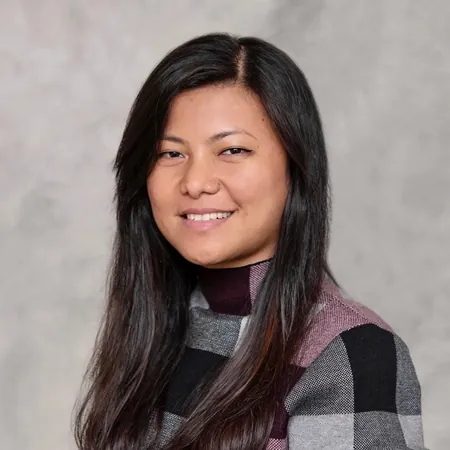
AI Revolutionizing Melanoma Diagnosis: An Exclusive Interview with Thazin Aung, PhD
2025-09-15
Author: Arjun
The Need for Consistency in Melanoma Care
In the world of melanoma diagnostics, consistency is not just preferred—it’s essential. Traditional assessments by pathologists often lead to wildly varying scores of immune cell infiltration, potentially jeopardizing patient care. Enter Thazin Aung, PhD, a pioneering research scientist at Yale University, who's on a mission to change the game with her AI-driven tool that standardizes these critical evaluations.
Understanding the Drive for AI in Melanoma Research
Aung's journey into the realm of artificial intelligence began over six years ago at Yale, where she focused on bridging machine learning with cancer research. "My goal was always to enhance translational research through technology," she explains. Three years ago, she specifically turned her attention to melanoma, initially validating previous studies but quickly aiming for something more ambitious—a tool that could streamline and standardize immune cell scoring.
Transforming Pathology with AI
Currently, pathologists analyze tumor slides under microscopes, estimating immune cell counts—an inherently inconsistent process subject to human error. Aung and her team trained their AI model on thousands of melanoma cells to automatically detect and quantify immune cells. The result? A consistent and reliable method of scoring that could potentially eclipse traditional techniques, thus improving efficiency in healthcare.
The Crucial Impact of Consistency on Patient Outcomes
The stakes are high: if two pathologists analyze the same patient's slide and yield different results, clinical decision-making becomes a challenge. Aung emphasizes, "In our study, we gathered data from 40 pathologists and over 90 operators, and those using our AI algorithm reported significantly tighter consistency compared to traditional methods." This newfound reliability is a game changer, paving the way for improved patient-focused treatment strategies.
Next Steps for AI Implementation in Clinical Settings
While their research has yielded groundbreaking findings, Aung knows there’s more work to be done. "Currently, our algorithm operates within an open-source framework, making it accessible yet potentially challenging for long-term clinical use due to technology advances," she says. The next steps involve developing a dedicated interface and linking their AI model to treatment outcomes through prospective trials.
Broadening the AI Horizon Beyond Melanoma
The implications of Aung’s work extend far beyond melanoma. She sees a future where AI tools can assist in the evaluation of various skin cancers—ranging from mucosal to acromelanoma—among others. However, she cautions that while open-source tools are ideal for research, a stable, fixed interface is necessary for clinical applications.
The Human Element Will Always Matter
Despite AI’s remarkable performance, Aung is firm in her belief that pathologists are irreplaceable. "We still need their expertise to interpret and validate the findings of our AI model," she asserts. As the field progresses, the collaboration between science and traditional pathology will remain vital for achieving optimal patient outcomes.
Aung’s innovations continue to shed light on the powerful role artificial intelligence can play in dermatology, marking a significant step toward a future of more precise, efficient, and reliable melanoma diagnostics.

 Brasil (PT)
Brasil (PT)
 Canada (EN)
Canada (EN)
 Chile (ES)
Chile (ES)
 Česko (CS)
Česko (CS)
 대한민국 (KO)
대한민국 (KO)
 España (ES)
España (ES)
 France (FR)
France (FR)
 Hong Kong (EN)
Hong Kong (EN)
 Italia (IT)
Italia (IT)
 日本 (JA)
日本 (JA)
 Magyarország (HU)
Magyarország (HU)
 Norge (NO)
Norge (NO)
 Polska (PL)
Polska (PL)
 Schweiz (DE)
Schweiz (DE)
 Singapore (EN)
Singapore (EN)
 Sverige (SV)
Sverige (SV)
 Suomi (FI)
Suomi (FI)
 Türkiye (TR)
Türkiye (TR)
 الإمارات العربية المتحدة (AR)
الإمارات العربية المتحدة (AR)